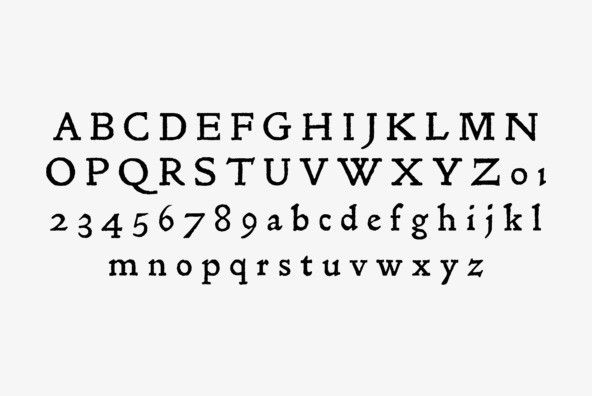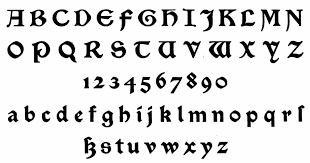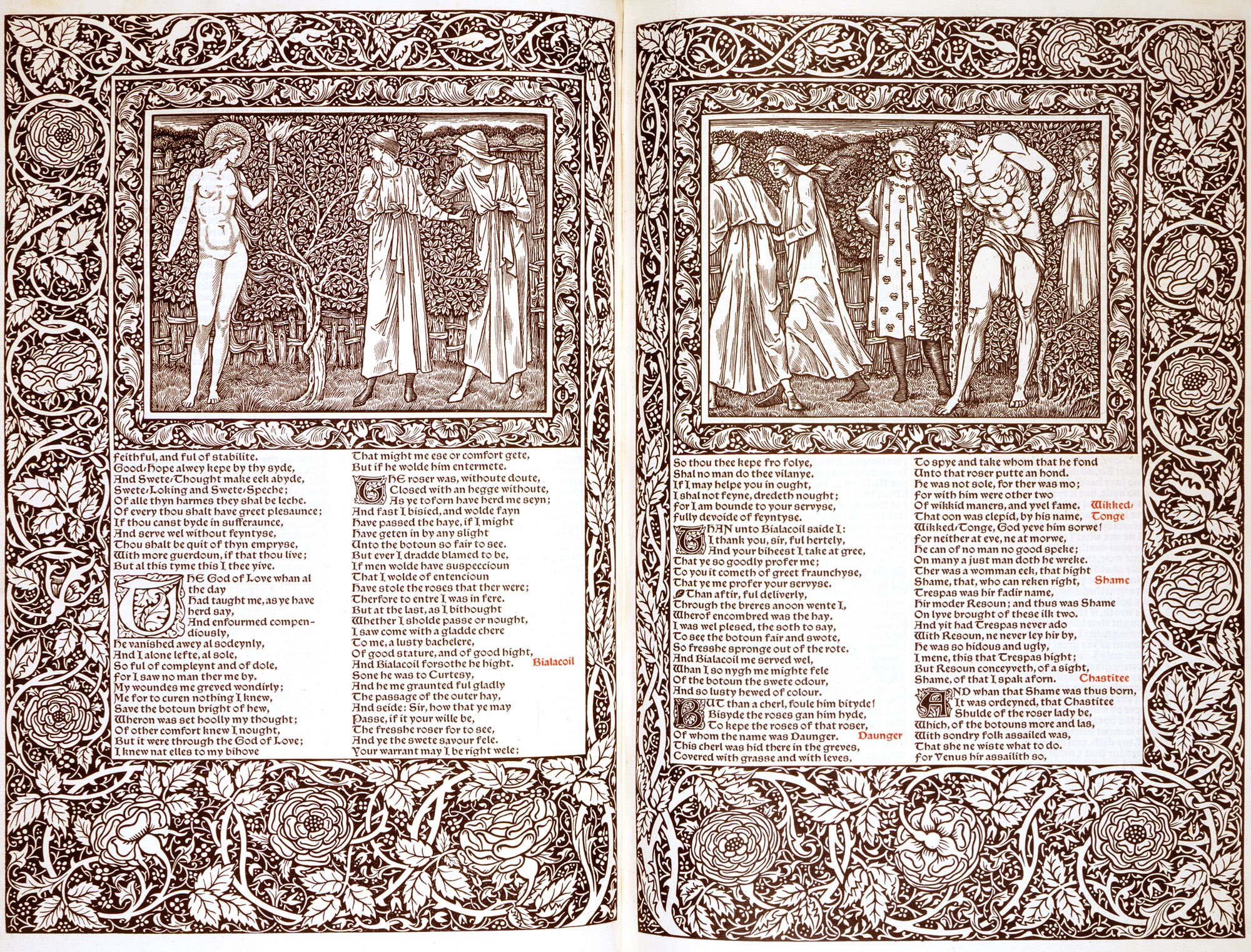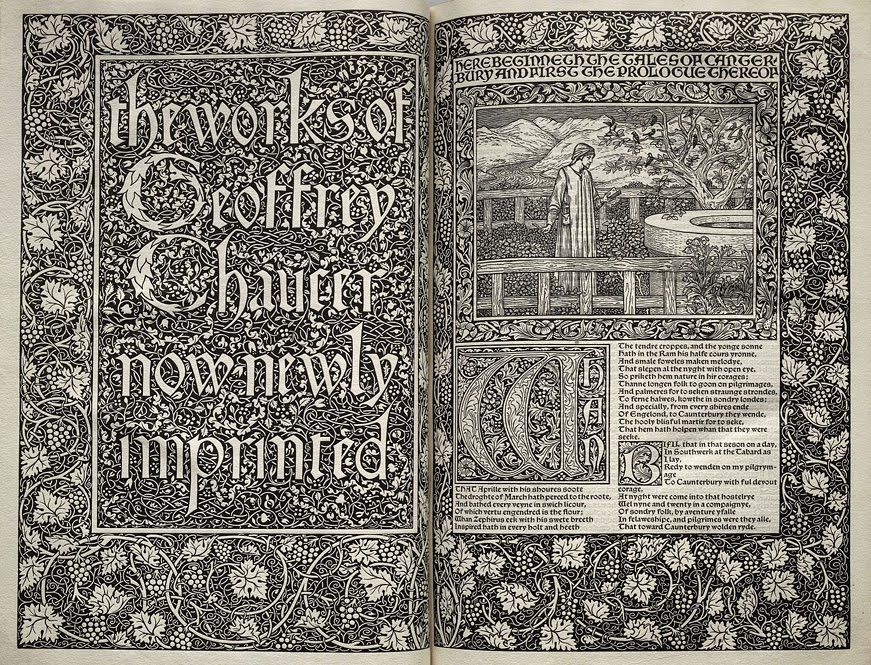The Kelmscott Press was set up by 1891 by William Morris, an influential artist of the Victorian 19th Century who headed the Arts and Crafts Movement. The movement started in the wake of the Industrial Revolution where the artists found that craftsmanship and design have been jeopardised by machines and mass production. Hence, the art of this movement reflected the spirit and styles of old medieval art.
The Kelmscott Press also printed books in the Medieval way with ornamental illustrations (done by his long time friend and partner Edward Burne-Jones). It reflected Morris’ admiration for Medieval scripts, books and craftsmanship. Everything was created from scratch: Morris created three typefaces and paper was made from linen and modelled after a 14th century Italian paper. It is made without chemicals, so was the ink that the press used. Very close attention was paid to the margins of the books as Morris wanted them to mirror the margins of Medieval books (the innermost margin is smallest followed by the top margin then the outermost margin then the bottom).
His philosophy for the books he has printed was that he wanted to produce beautiful books but as the same time, they must be easy on the eyes and readable. The three fonts that he printed were: Golden, Troy and Chaucer, all named after the books the fonts were first printed for (The Golden Legend, The Recuyell of the Historyes of Troy and The Works of Geoffrey Chaucer). He wanted to use a font that is consistent in stroke widths (unlike modern fonts with the huge contrast in thin and thick strokes) for readability and modelled Golden after the typography of 15th century printers. He then created a roman font Golden and the Gothic font Troy. As criticism towards Gothic letters was mostly of the difficulty to read them, he created the font without bundling the letters together so that it is not condensed and is as readable as a roman font. The Chaucer is a smaller version of Troy.


He also believed the modern printers used space too sparingly and left too many rivers. He felt that space should be used just enough to separate words and should be done so consistently and frowned against excessive leading.
The Press’ most celebrated work was ‘The Works of Geoffrey Chaucer’, later known as the ‘Kelmscott Chaucer’ that reflects the popularity and influence of the Press. It closed down seven years after it was established. When Morris passed away in 1896, his successor Sydney Cockerell tied things up in a year or two and closed it to preserve his legacy.


Thoughts:
I think that it’s very admirable of Morris to want to pay tribute to medieval books and print and the lengths that he would go to ensure that authenticity. In our capitalistic society today, what saves cost and time would be the preferred method and so a Kelmscott Press would most likely not survive if it were to be set up now. However, I feel like a Press like this would remind us of a kind of beauty and craftsmanship that is lost as technology becomes increasingly advanced and preferred.
References:
https://www.vam.ac.uk/articles/introducing-william-morris
https://williammorrissociety.org/about-william-morris/
http://www.victorianweb.org/authors/morris/kelmscott.html
https://archive.org/stream/ANoteByWilliamMorrisOnHisAimsInFoundingTheKelmscottPressTogether/MdUZ232M87M831898#page/n10/mode/1up
https://www.lib.umd.edu/williammorris/kelmscott-press/the-kelmscott-press
https://www.clevelandart.org/research/in-the-library/collection-in-focus/william-morris-and-kelmscott-press
https://www.britannica.com/art/Arts-and-Crafts-movement

